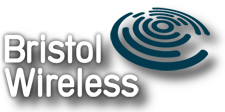Linux for Schools Article
http://news.independent.co.uk/world/science_technology/story.jsp?story=540603
In the beginning was Word
When schools buy software, there seems to be only one choice: Microsoft. Why don’t more of them use Linux? It can do most of the work, it’s more secure and it’s free. Michael Pollitt investigates
14 July 2004
In the past week there’s been a lot of talk about "choice" in relation to schools. But there’s one area where children, and schools, don’t see much choice: the software they use. It’s likely, for example, that children leave school thinking that Microsoft Word is the only word processing program. That Excel is the only spreadsheet. And Internet Explorer the only web browser.
This one-tracked experience worries Simon Tindall. "Are we still teaching children to use Microsoft and PCs, or are we using computers to teach history or geography?" he demands. "Microsoft is so strong in schools today that there’s concern that it’s creating a status quo and therefore reducing innovation within education."
It could be argued that Tindall has an animus here – after all, he is the UK regional manager education & research for Sun Microsystems, one of Microsoft’s bitter rivals. But he has a wider point. He suggests that we should think beyond the "current malaise" of PCs and Microsoft applications. For example, if children learn exclusively on Microsoft Word, that’s arguably fine for the business world, but ill-equips them for change. There’s a price tag too: Tindall reckons that schools spend £22m annually on Microsoft Office alone. That would pay for a lot of teachers and fix many leaky roofs.
To help cut such bills, Sun Microsystems has challenged Microsoft with free office productivity software called StarOffice, which runs under Windows, Linux and Solaris. It features word processing, spreadsheet, presentation, drawing and database functions, and has been licensed by the Scottish Executive on behalf of 2,800 schools. However, there aren’t any savings yet because the deal has only just been signed, and schools don’t have to use the software – they have the choice.
But can schools move away from Microsoft, as some in the business world are doing? There, the Linux operating system (which can be installed on a standard PC) is stirring things up: a typical Linux distribution contains OpenOffice – which is based on StarOffice, and compatible with Microsoft Office – along with other word processors. In the right hands, Linux pushes Microsoft off the desktop along with the most common viruses, worms and spyware. Linux, the argument goes, might help children to grow up to be computer-literate rather than Microsoft-literate.
But only a few schools – perhaps 10 or so – are taking desktop Linux seriously. Steve Brown, the managing director of Novell UK, acknowledges this. "The majority of schools using Linux in the UK do so on their servers," he says, "and only a few – such as St Paul’s Roman Catholic High School in Manchester – are using Linux on the desktop." (Novell bought SUSE, one of the leading Linux distributions, earlier this year.)
"It’s incumbent on schools to teach generic IT skills," adds Brown. "Schools should teach word-processing skills but not limit this to teaching how to use Microsoft Word only. The students are the workforce of tomorrow and should be empowered to learn how to use different applications, and not be locked into thinking there is only one, proprietary, option."

Hi Sean,
Thanks for the pointer to the article. The link to the The Independent’s post is dead though, an updated link is:
http://www.independent.co.uk/news/science/in-the-beginning-was-word-553054.html
I also wanted to share my current research blog, Open Source in Education, with you. You can visit (and comment) at http://slinkydiss.blogspot.com
cheers
Slinky